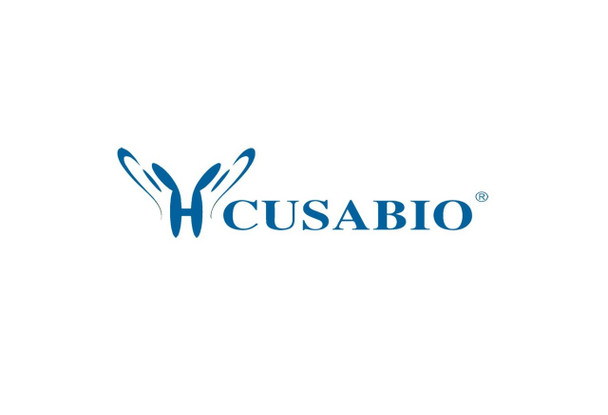Cusabio Human Recombinants
Recombinant Human Protein S100-A14 (S100A14) | CSB-EP875728HU
- SKU:
- CSB-EP875728HU
- Availability:
- 13 - 23 Working Days
Description
Recombinant Human Protein S100-A14 (S100A14) | CSB-EP875728HU | Cusabio
Alternative Name(s): S100 calcium-binding protein A14
Gene Names: S100A14
Research Areas: Signal Transduction
Organism: Homo sapiens (Human)
AA Sequence: MGQCRSANAEDAQEFSDVERAIETLIKNFHQYSVEGGKETLTPSELRDLVTQQLPHLMPSNCGLEEKIANLGSCNDSKLEFRSFWELIGEAAKSVKLERPVRGH
Source: E.coli
Tag Info: N-terminal GST-tagged
Expression Region: 1-104aa
Sequence Info: Full Length
MW: 38.7 kDa
Purity: Greater than 90% as determined by SDS-PAGE.
Relevance: Modulates P53/TP53 protein levels, and thereby plays a role in the regulation of cell survival and apoptosis. Depending on the context, it can promote cell proliferation or apoptosis. Plays a role in the regulation of cell migration by modulating the levels of MMP2, a matrix protease that is under transcriptional control of P53/TP53. Does not bind calcium.
Reference: "S100A14 stimulates cell proliferation and induces cell apoptosis at different concentrations via receptor for advanced glycation end products (RAGE)." Jin Q., Chen H., Luo A., Ding F., Liu Z. PLoS ONE 6:E19375-E19375(2011)
Storage: The shelf life is related to many factors, storage state, buffer ingredients, storage temperature and the stability of the protein itself. Generally, the shelf life of liquid form is 6 months at -20?/-80?. The shelf life of lyophilized form is 12 months at -20?/-80?.
Notes: Repeated freezing and thawing is not recommended. Store working aliquots at 4? for up to one week.
Function: Modulates P53/TP53 protein levels, and thereby plays a role in the regulation of cell survival and apoptosis. Depending on the context, it can promote cell proliferation or apoptosis. Plays a role in the regulation of cell migration by modulating the levels of MMP2, a matrix protease that is under transcriptional control of P53/TP53. Does not bind calcium.
Involvement in disease:
Subcellular Location: Cytoplasm
Protein Families: S-100 family
Tissue Specificity: Expressed at highest levels in colon and at moderate levels in thymus, kidney, liver, small intestine, and lung. Low expression in heart and no expression is seen in brain, skeletal muscle, spleen, placenta and peripheral blood leukocytes.
Paythway:
Form: Liquid or Lyophilized powder
Buffer: If the delivery form is liquid, the default storage buffer is Tris/PBS-based buffer, 5%-50% glycerol. If the delivery form is lyophilized powder, the buffer before lyophilization is Tris/PBS-based buffer, 6% Trehalose, pH 8.0.
Reconstitution: We recommend that this vial be briefly centrifuged prior to opening to bring the contents to the bottom. Please reconstitute protein in deionized sterile water to a concentration of 0.1-1.0 mg/mL.We recommend to add 5-50% of glycerol (final concentration) and aliquot for long-term storage at -20?/-80?. Our default final concentration of glycerol is 50%. Customers could use it as reference.
Uniprot ID: Q9HCY8
HGNC Database Link: HGNC
UniGene Database Link: UniGene
KEGG Database Link: KEGG
STRING Database Link: STRING
OMIM Database Link: OMIM









